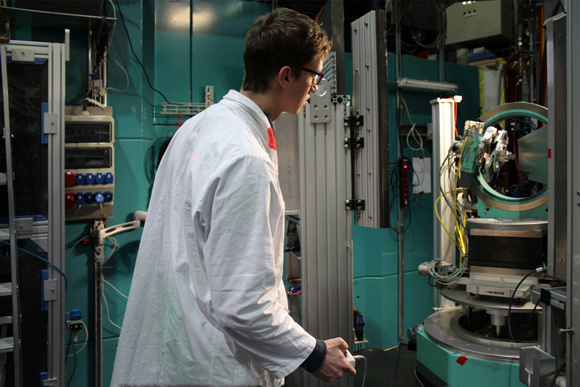Neutrons used to detect internal stress in AM parts
May 17, 2021

A team of researchers gathered from the Federal Office for Materials Research and Testing (BAM) and Siemens Energy GmbH, both based in Berlin, Germany; the Heinz Maier-Leibnitz Center, Garching; and the University of Potsdam, Institute of Physics and Astronomy have succeeded in using neutrons from the Technical University of Munich research neutron source reactor for non-destructive detection of internal stress within additively manufactured turbine buckets.
Gas turbine buckets have to withstand extreme conditions whilst exposed to tremendous centrifugal forces at high temperatures and under high pressure. In order to further maximise energy yields, the buckets have to hold up to temperatures which are higher than the melting point of the material. This is made possible by manufacturing hollow turbine buckets which are air-cooled from the inside.
These turbine buckets can be made using Laser Beam Powder Bed Fusion (PBF-LB), producing intricate lattice structures inside the hollow turbine buckets provide the part with the necessary stability.
“Complex components with such intricate structures would be impossible to make using conventional manufacturing methods like casting or milling,” stated Dr Tobias Fritsch of the BAM.
But the laser’s highly-localised heat input and the rapid cooling of the melt pool lead to residual stress in the material. Unfortunately, these stresses can damage the components as early as during the production process, and up until the necessary post-processing takes place.
With this in mind, Fritsch, with previously-gained experience in neutron measurements in mind, investigated a gas turbine component for internal stress using neutrons from the Research Neutron Source Heinz Maier-Leibnitz (FRM II). The component was made using Additive Manufacturing processes by gas turbine manufacturer Siemens Energy, which additively manufactured a lattice structure only a few millimetres in size using a nickel-chrome alloy typical of those used for gas turbine components. The usual heat-treatment after production was intentionally omitted.
“We wanted to see whether or not we could use neutrons to detect internal stresses in this complex component,” explained Fritsch. “We’re very glad to be able to make measurements in the Heinz Maier-Leibnitz Zentrum in Garching; with the equipment provided by STRESS-SPEC we were even able to resolve internal stress in lattice structures as intricate and complex as these.”
Now that the team has succeeded in detecting the internal stress within the component, the next step is to reduce this destructive stress.
“We know that we have to modify the production process parameters and, thus, the way in which the component is built up during printing,” added Fritsch. “The more localised the heat application is during the melting process, the more internal stress results.”
For as long as the AM machine’s laser is aimed at a given point, the heat of the point rises relative to adjacent areas. This results in temperature gradients that lead to irregularities in the atomic lattice, meaning heat should be as evenly distributed as possible through the manufacturing process. In the future, the group will research the situation with new components and modified manufacturing parameters. The team is already working together with Siemens to plan new measurements with the TUM neutron source in Garching.
Further details are available via the original research paper, published in the Journal of Applied Crystallography.
















